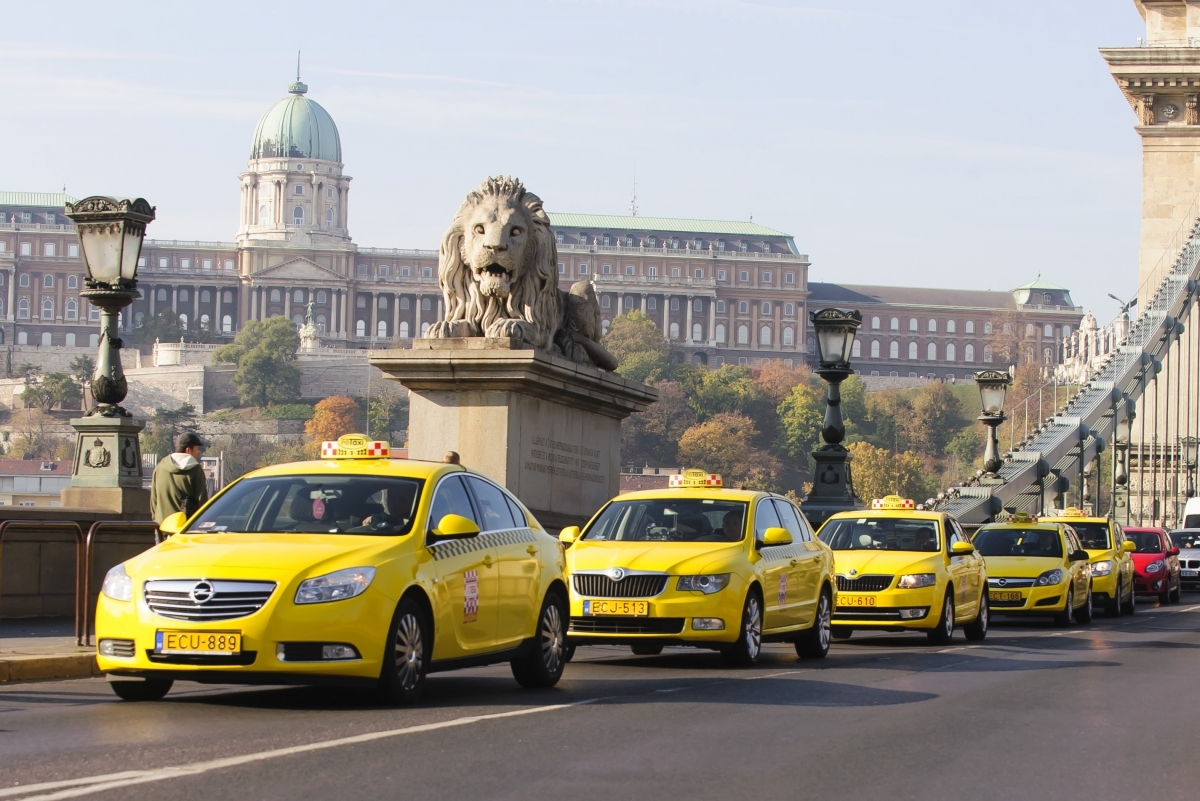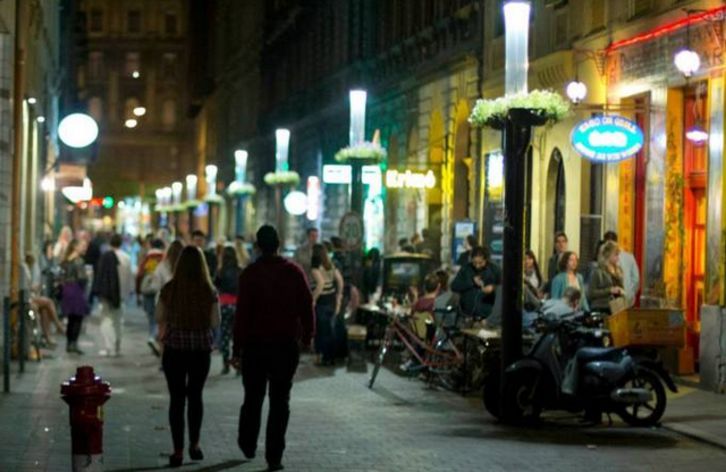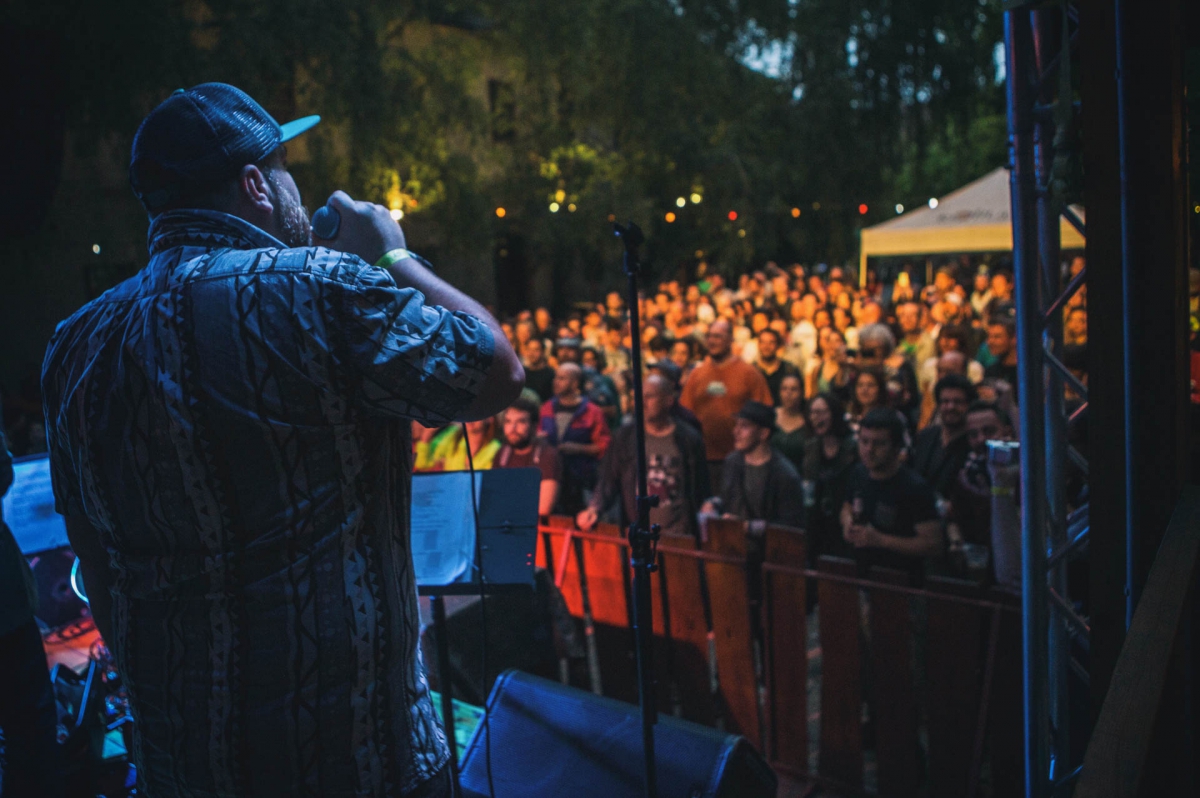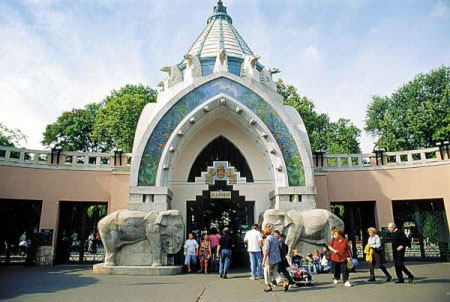How to get here and get around Budapest:
If you arrive by plane, you will be landing at Budapest Liszt Ferenc International Airport, while with train you will be arriving at Keleti or Nyugati Railway Stations. All of these have connection to the capital’s mass transit system and the Centre for Budapest Transport (BKK), has a fairly good English language page with a journey planner tool and app. (You can also use your GoogleMaps app, as it has built-in timetables and routes for Budapest.)
Note that Budapest mass-transit is still using old-school paper tickets, and there are often controllers at the metro stations checking the validity of your tickets, so please make sure that you have a validated ticket with you all times. The same type of ticket (HUF 370 per piece) can be used on the metro, buses and trams, it must be validated at the entrance of the metro station or upon entering the bus/tram by sticking them into orange validation boxes. Tickets can be purchased in bulk (“gyüjtőjegy”) at a more affordable rate (set of 10 for HUF 3,000). Tickets from same set could be used by different persons traveling together, but they should NOT be removed from the set. Daily and weekly passes are also available for tourists at the boots and they allow for unlimited number of travels within the time period (you might need a passport photo). For detailed info see www.bkk.hu
 If you want to use yellow cabs, we would recommend the use of Taxify, as Uber is currently illegal in Hungary. At the airport or the train stations you might be approached by people offering taxi service, but please DO NOT accept this under any circumstances, as these are always illegal operators, who will charge you excess fees for the ride (or worse, they will take you to a different place). At the airport, after you exit the terminal building there is a kiosk where you can order a regular cab service.
If you want to use yellow cabs, we would recommend the use of Taxify, as Uber is currently illegal in Hungary. At the airport or the train stations you might be approached by people offering taxi service, but please DO NOT accept this under any circumstances, as these are always illegal operators, who will charge you excess fees for the ride (or worse, they will take you to a different place). At the airport, after you exit the terminal building there is a kiosk where you can order a regular cab service.
There is an official bike-rental scheme, called BuBi, but also several private rental schemes (e.g.: budapestbike.hu, www.yellowzebrabudapest.com).
A note on safety: Budapest is a safe city and if you do not get too far away from the centre you will be fine. However, some districts (as in any metropolis) can get rough during the night. At these places locals are unlikely to speak any foreign languages, so asking for help is not trivial either. Therefore, we kindly ask you, for your own safety, not to explore the far-flung areas of the city on your own by night. In case of emergency, call 112.
Where to go to eat:
As it became a major tourist destination, recently Budapest underwent a food revolution. Besides the traditional restaurants offering mediocre services at high prices (note: a rule of thumb would be that if there is “live gypsy music” on offer and an excess of paprika in the decoration, you probably do not want to enter), there are exciting new restaurants and cafes all over the city. From expensive Michelin starred restaurants to cheaper places with great food and even food-trucks (e.g. Karaván in Kazinczy street) the food-scene has something for everyone. A full list of these places would be impossible to compile (especially as it is a very dynamic scene), but you can look up different places on the Off the Beat in Budapest, Tripadvisor and Gault&Millau lists.
Sadly some places are known for taking advantage of unsuspecting tourists, so there is also a list of places where you DO NOT want to enter.
The official currency in Hungary is Hungarian Forints (HUF), at restaurants and bars a gratuity of 10% is expected (and sometimes included in the bill, so please check your bill first before tipping).
Where to go to drink:
 Budapest’s party district, centred around Kazinczy Street. Whereas this area has become extremely touristy in the past few years (it is more likely that you would bump into a British stag party here than anywhere in central London), if you have never been in Budapest before, you probably want to experience this district full with lively ruin-pubs and open air places. Szimpla-kert is the grandmother of all ruin pubs, the place that started the ruin-pub craze. Incidentally, Sunday mornings it also the place of a lovely but crowded farmer’s market. Some places we would recommend in this area: Yellow Zebra – also a bike rental place, Kisüzem, Fekete Kutya, Mika Tivadar Bar.
Budapest’s party district, centred around Kazinczy Street. Whereas this area has become extremely touristy in the past few years (it is more likely that you would bump into a British stag party here than anywhere in central London), if you have never been in Budapest before, you probably want to experience this district full with lively ruin-pubs and open air places. Szimpla-kert is the grandmother of all ruin pubs, the place that started the ruin-pub craze. Incidentally, Sunday mornings it also the place of a lovely but crowded farmer’s market. Some places we would recommend in this area: Yellow Zebra – also a bike rental place, Kisüzem, Fekete Kutya, Mika Tivadar Bar.
If you want to explore other areas, again the Off the Beat in Budapest can serve as a good starting point. On the Buda side, the area around Gellért Bath is becoming more popular – Pagony Kert operating in the former children pools of Gellért is one of the places you might not want to miss. Opposite to this, on the Pest side, right near the magnificent Great Market Hall, is the “The Whale”, the refurbished warehouses of the market full with shops and bars. The Jónás Craft Beer bar here is one of the places we would recommend.
Talking of craft beer, along with the food and coffee-shop revolution, Budapest is experiencing a burst in beverages from local microbreweries. The epicenter of this is the Élesztő bar, but there are places where you can also enjoy some of the best brews: the steampunk-themed Krak’n Town, Léhűtő, in the middle of the party district, and finally Hopaholic.
And in case you are more into wine, obviously Hungary has a long and great tradition of wine-making, and there are atmospheric wine-bars all over the city. Here are a couple of those you might want to try: Drop-Shop is one of the oldest wine-bars in Budapest, and with over 70 wines and champagnes on offer every day, should be high on your list if you are a wine aficiando. DiVino is also a highly rated company, with two bars – one right behind the St. Stephen Basilica, and one in the middle of the party district. Also in the party district are Doblo, Kadarka and ETAP, three further lively places with a good wine list. And in case you are looking for a quieter place on the Buda side, there is Palack at St. Gellért Square.
Where to shop:
In the unlikely case you want to buy “official” Hungary themed merchandise along the paprika-goulash-pálinka axis, we would recommend to do that in one of the souvenir shops at Vörösmarty tér (paprikamarket.hu) (or at the airport). But perhaps you might want to try some nice designer shops which offer trendy items at great value. One fine example for this is Szputnyik Shop, close to Kazinczy Street, but also Retrock and BomoArt. Of course no shopping spree in Budapest would be complete without visiting the Great Market Hall (Nagycsarnok).
Where to go to have a good time 🙂 :
 Done with the poster session and ready for a concert? Many open-air places will offer live gigs during the summer nights, but there will be also some concerts during the the conference where popular Hungarian bands will be on show.
Done with the poster session and ready for a concert? Many open-air places will offer live gigs during the summer nights, but there will be also some concerts during the the conference where popular Hungarian bands will be on show.
Places in and around Budapest to visit, if you have some free time:
On the last day of the conference we offer everyone the chance to explore Budapest during a guided tour. But if you come earlier or stay longer, here are a couple of places you should visit to experience the best of Budapest. (There are also free guided tours, and free itineraries for tourists.)
Over the years escape rooms became essential parts of the Budapest landscape. If you like these kind of logical games (or never tried, but want to experience them), here is a list of more popular places.
Városliget, the equivalent of Central Park in Budapest is situated right around Heroes’ Square (Hősök tere), one of the central tourist destinations in the city. Established more than a century ago as one of the first city parks in Europe today it is the location of a controversial museum building project. It is still a very popular place with locals, and it is the home of Széchenyi Spa, the Budapest Zoo and the excellent open-air beer garden Kertem.
Margaret-island (Margitsziget, named after the daughter of a medieval king, who lived in a convent on the island) is usually also a nice place to relax.
The Castle District on the Buda side is also worth a walk, and overlooking the castle from the Southern side is Gellért Hill, one of the highest points within the city, where you can get a pretty impressive panorama of the Hungarian capital.
Hungary had a stormy history during the 20th century, and as authoritarian systems came and went, they all tried to force their worldview on the population through the means of erecting statues at public places. A collection of Cold War era statues and other memorabilia can be found at the Memento Park.
Budapest is famous for its baths and spas, so you might want to pack a swimsuit. At the bottom of Gellért Hill you can find two of the more famous spas: Rudas, established during the Turkish occupation of the city in the 16th century, and Gellért, within the famous art-nouveau building of Gellért Hotel. If you like thermal baths, then the open air Széchenyi Bath in Városliget should also be on your list.
The impressive ruins of Aquincum, the formal capital of the Roman province Pannonia are surrounded by the Aquincum Museum, and in the neighbourhood you can also find a nice and leafy area at the bank of Danube, the “Római part”, full with boathouses where locals go to relax. Sadly all these will be most likely gone soon, as this is the sight of yet another controversial building project.
If you are looking for a daytrip you could visit Szentendre, a small but picturesque town north of Budapest. It is situated along the Western bank of the Danube, and is full of small galleries, coffee and sweets shops. Farther north on the same bank, at the magnificent Danube Bend is Visegrád, the former medieval seat of the Hungarian kings (also the place where the Visegrád Group gets its name from). There is good public transportation to both places, and also a regular boat service from Budapest.
Gödöllő is a small town east from the capital. Take the suburban train (called “HÉV”) from the metro station called “Őrs vezér tér”, one of the endpoints of the red line. A 45-minutes long eventful HÉV ride (expect a lot of bumps!) takes you to Gödöllő. Get off in the middle of the town (“Szabadság tér”) and walk to one of the most beautiful baroque castles of the region (“Grassalkovich Kastély”; 5 mins). There is also a hotel in the castle.
Food: Yellow Pub, ca. 10 minutes walk from the castle.
The Eastern edge of Lake Balaton is also within an hour from the capital, but if you want to explore the area you might want to spend more than a single afternoon there.
Where to go with kids:
 As mentioned before, Budapest Zoo is located in Városliget. Built in a narrow area in the proximity of railroad tracks it underwent a pretty impressive renaissance over the past few decades and probably it is one of the best zoos in Europe at the moment, with some beautiful art-deco buildings, imaginative landscaping, and lots and lots of young animals.
As mentioned before, Budapest Zoo is located in Városliget. Built in a narrow area in the proximity of railroad tracks it underwent a pretty impressive renaissance over the past few decades and probably it is one of the best zoos in Europe at the moment, with some beautiful art-deco buildings, imaginative landscaping, and lots and lots of young animals.
Normafa is the equivalent of Hampsted Heath in Budapest – a pretty hilltop on the Buda side, where locals themselves often go to relax. It was refurbished recently, so all the walks, playgrounds and other public areas are in good condition. Normafa is also one of the stops for the Children’s Railway, a much loved communist era relique, still operated mostly by kids. This 11 km route (the longest route of this kind in the world) spans some of the prettier hills at the Western edges of Budapest. You can get off at Csillebérc, where you can enjoy the Challenge-land adventure course, or at János-hegy, the highest of the Buda hills, and take a Chair-lift to descend back to the city.
The Buda hills are also full with drip-stone caves, some of them you can visit even with kids, Pál-völgyi and Szemlő-hegyi caves being the best two examples probably.
In case you visit Szentendre, the local Skanzen, the open-air folk-art museum should be high on your list. Full with children-friendly activities, it provides a comprehensive picture of the traditional lifestyle in the Hungarian villages.

